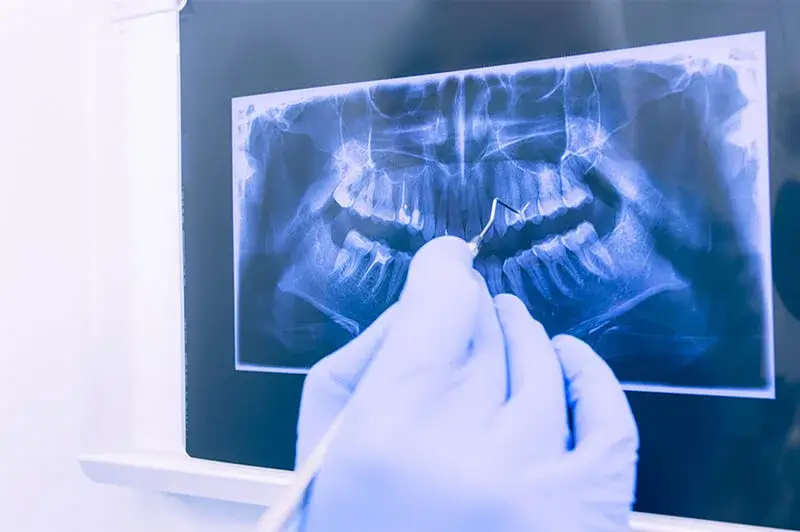Panoramic Radiographs
Cavities, gum disease, and impacted teeth are just a few of the oral health issues that can be detected with digital X-rays. Both general and cosmetic dentists at Cure Dental use digital X-rays to better inform patient care.

The Importance of Dental Radiographs
X-rays are extremely powerful electromagnetic waves that may go through matter and reveal the inner structure of our teeth and bones. Dense things, like teeth and jaws, show up as lighter shades on an X-ray, while less dense areas, like gums, show up as darker shades. Dentists can use these high-resolution images to evaluate their patients’ dental health and the underlying bone and soft tissue structures that aren’t apparent from the outside.
To get a complete picture of your teeth, jaws, and facial bones, dental X-rays (both digital and traditional) are crucial components of preventive oral care. X-rays help dentists uncover flaws that aren’t obvious during regular exams so they can diagnose problems quickly. At Cure Dental, we use dental x-rays to check for the following issues:
- Interproximal decay is a prevalent form of tooth decay.
- Dental fillings with cavities.
- deterioration of the jawbones’ skeletal framework.
- The bone structure of a tooth can be drastically altered by infection.
- The condition of the jawbone where a tooth used to be
- A dental abscess occurs when pus builds up in the space between the gums and teeth.
- The mouth is prone to growths like cysts and tumors.
- Dental implants and modern orthodontics might help you regain your confidence and a bright smile.
- Knowing how to spot the emergence of wisdom teeth
- Damaged or decayed teeth.
Need a Dental Consultation?
Variety of Dental Radiographs
Bitewing X-rays:
Bitewing X-rays are specific dental X-rays used to correctly analyze distinct parts of your mouth. To detect decay, your dentist may take several bitewings to show the full root structure of your teeth, both upper and lower. Cavities and other oral health problems can be easily detected using this imaging.
Periapical X-rays:
The crown, root canal, and even bone structure beneath the gum line can all be seen on a single-tooth radiograph, a type of dental x-ray. For the purposes of diagnosis and treatment, radiographic examinations of the teeth allow dentists to see even the tiniest of changes around each tooth.
Complete Oral X-Rays:
Combining bitewing and periapical images in a series of X-rays allows for a thorough dental assessment. If the doctor suspects a cyst or tumor, or if you need extractions or treatment for gum disease, they will have a complete picture of your oral structure to work with.
Panoramic x-rays:
With a single panoramic x-ray that covers your entire mouth from top to bottom, your dentist will be able to precisely locate each of your teeth and identify any potential problems, such as impacted teeth.
Occlusal x-rays:
Occlusal X-rays offer an even more comprehensive image of the upper and lower jaws than bitewing X-rays do. Pediatric dentists can use these X-ray scans to better monitor their patient’s oral health by identifying teeth that have not yet broken through the gums.

